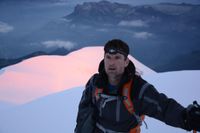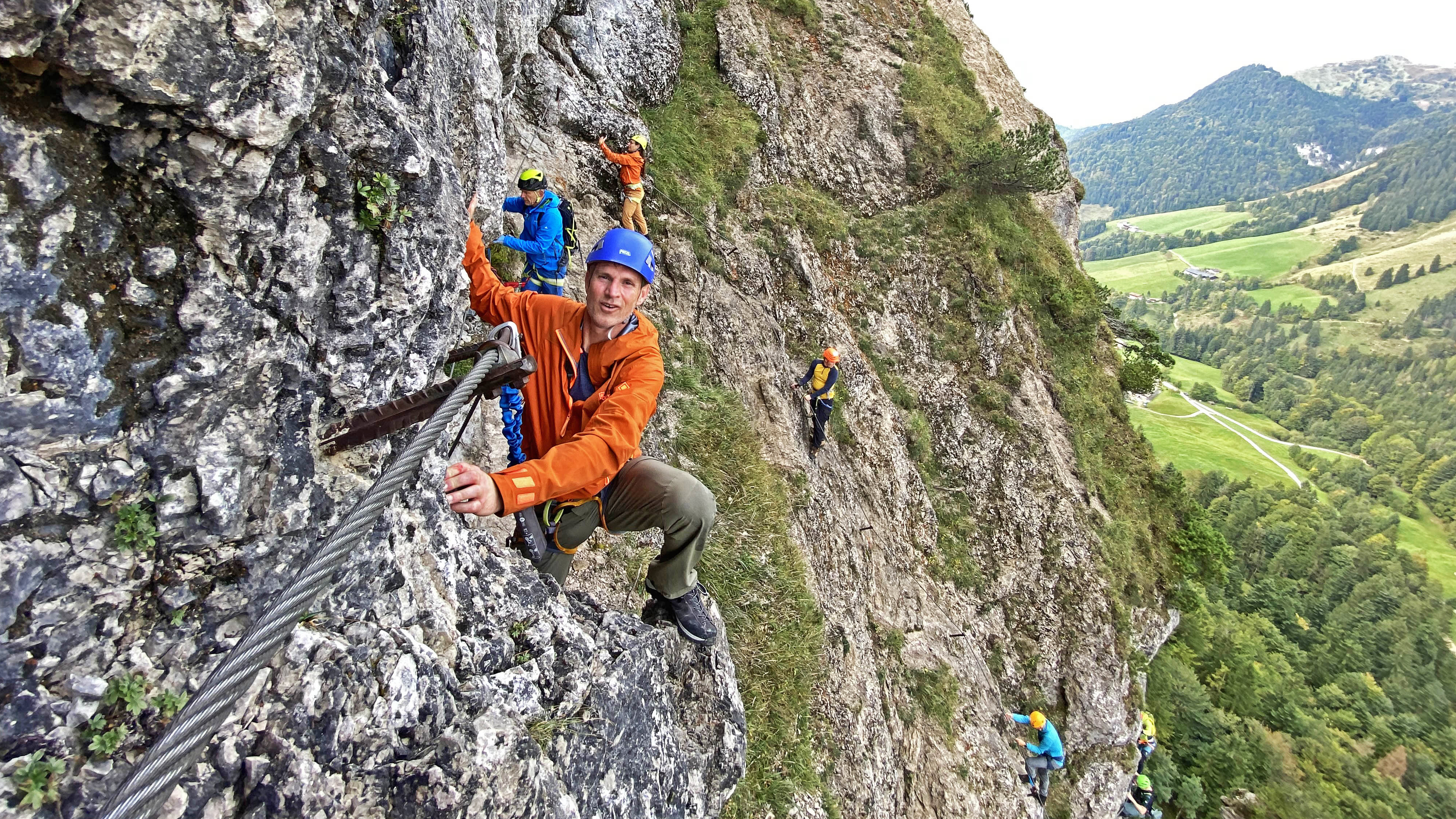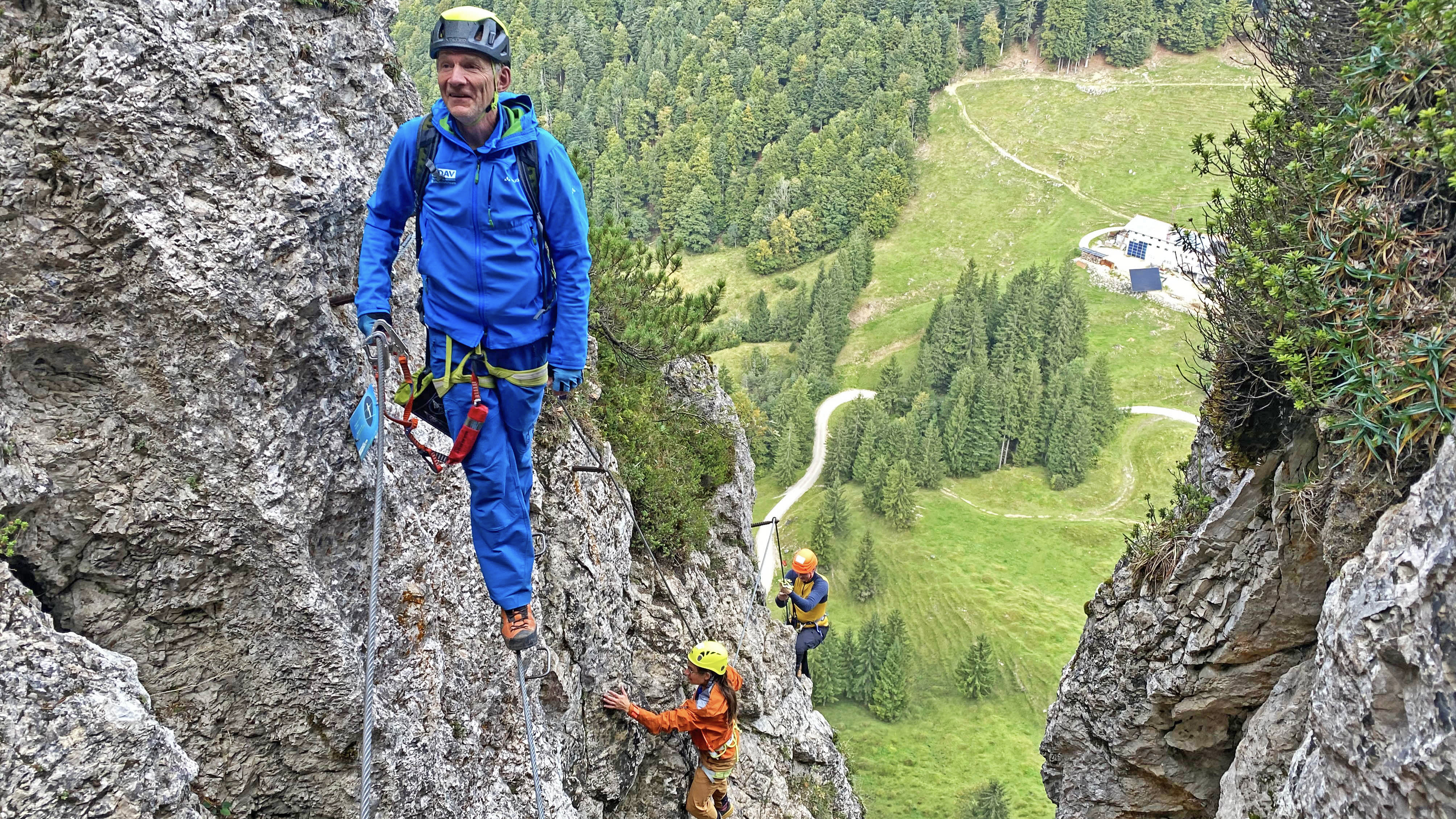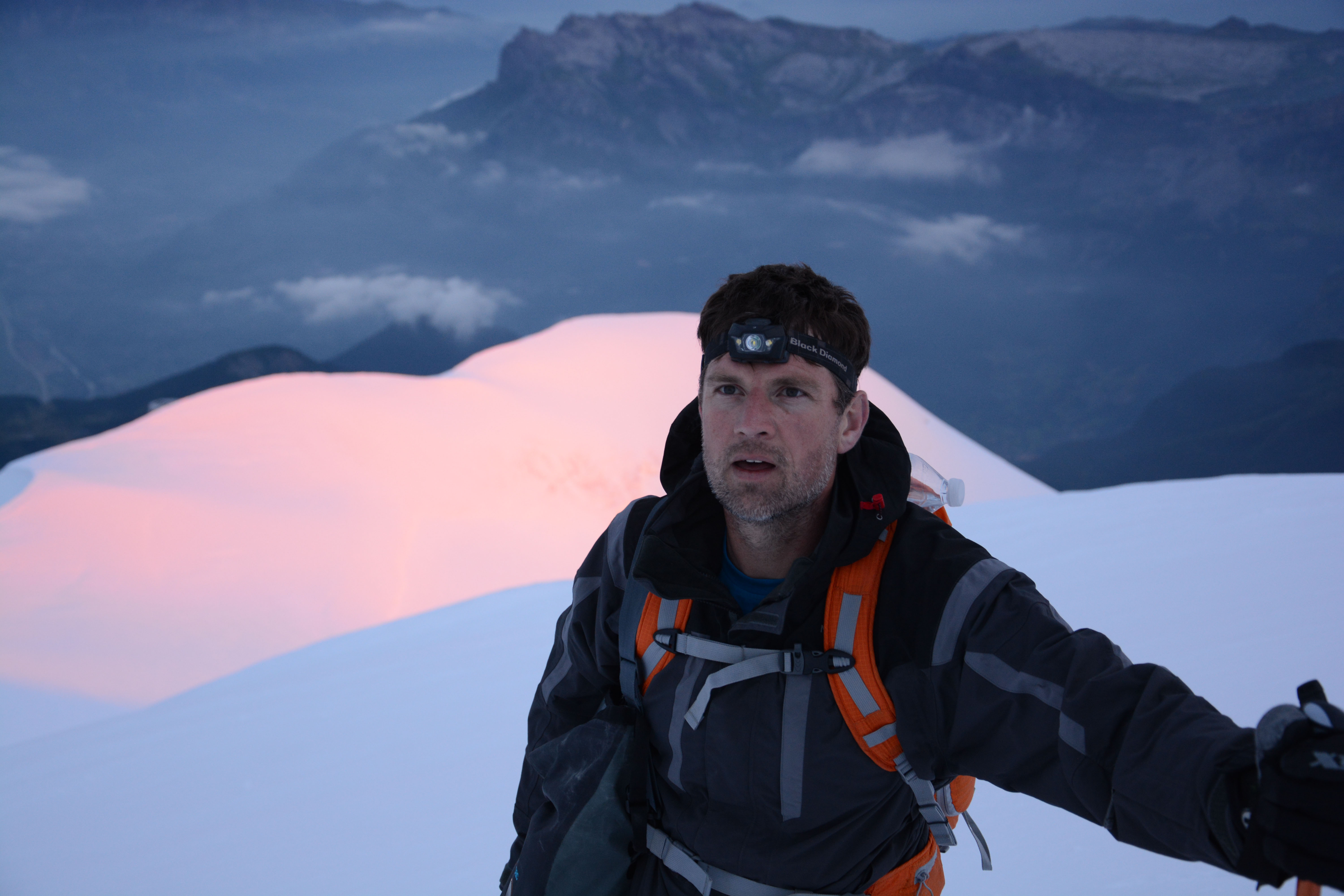Why you need to try via ferrata this year
Offering all the thrills without the spills… Via ferrata is a gateway drug for rock climbing – once you’ve experienced the highs, you’re going to get hooked


A jumble of thoughts rush through my mind as I cling to an overhanging piece of limestone, high on the side of Harauer Spitze in the Chiemgaur Alpen in Austria, my feet dangling above a sheer drop of several hundred metres. The most coherent one is: “So…this is the buzz that real rock climbers experience.”
I take another glance down at the mountain refuge where I got kitted up for this adventure less than an hour ago, to find the large alpine hut now looks about the size of a matchbox. It seems incredible that we’ve managed to put so much vertical distance between us and the starting point of the via ferrata route we’re climbing in such a small amount of time.
Adrenaline is coursing through my veins and a frisson of excitement ripples across my skin as I contemplate the next section, looking for handholds and a good place to position my feet. It’s like chess, this, you always need to think a few moves ahead.

I’m with a group of people – most of us fairly inexperienced climbers – testing some new technical apparel made with Gore-Tex ePE in the Tyrol region, which spans the seam between Austria and Germany.
The area is stunning, but while it’s wonderful to lace up your best hiking boots or pull on some walking shoes or trail-running shoes and go trekking, fastpacking and backpacking on the paths around here, I’ve just decided that the more vertiginous pursuit of via ferrata is absolutely the best way to explore this magical mountainscape.
And I’m increasingly certain that, no matter where you are, it’s the perfect way for relative newcomers to rock climbing (such as myself) to taste what more accomplished alpinists experience every time they venture into the mountains.

OK, but what the hell is via ferrata?
In Italian, via ferrata means ‘iron path’, and it describes climbing routes that have been augmented with features such as metal rungs fixed into the rockface and occasionally cables spanning drops (including some Tyrolean traverses) to make scaling the routes much easier.
Get all the latest news, reviews, deals and buying guides on gorgeous tech, home and active products from the T3 experts
Ladders and other such tools have long been used in mountaineering (watch any film about climbing Everest and you’ll see them employed on the roof of the world), but the concept of via ferrata really originated during World War I, when these ‘iron paths’ were hastily built to move troops around in the Dolomites, where a horrific high-altitude conflict raged on a near-vertical battlefield between Italian and Austro-Hungarian soldiers for three years.
Decades after those awful events took place, many via ferrata routes were restored for more peaceful reasons, with more reliable metal holds replacing the weathered ropes and wooden ladders used by the soldiers.
Now intended purely for recreational use, steel cables have been put in place for the entire length of the routes, so you can clip your climbing harness into a near-foolproof safety line using a pair of karabiners on a specially designed weight-bearing lanyard (at each joint in the cable, you move around the obstacle by unhitching and then reconnecting one karabiner at a time, so the other one is always attached to the cable, keeping you safe).

Why not just go climbing?
Calling almost every muscle in your body into action, climbing is an excellent workout. Involving aerobic and anaerobic activity (as you perform different moves), it’s also excellent for cardiorespiratory fitness, burns up a heap of calories and is fantastic for mental health, according to a swathe of scientific studies and anecdotal evidence.
However, despite its myriad health and fitness benefits, many people are put off real rock climbing because it can feel like a very inaccessible sport. Going to an indoor climbing gym and using an auto-belay while ascending an artificially created route is one thing, but actually venturing out to a crag and getting your hands on rock can feel extremely intimidating.
Unless you’re lucky enough to have a friend who happens to be an experienced climber and who is willing to literally show you the ropes, you’re likely to feel exposed both to danger and (in your own head at least) judgment from others, more accomplished climbers at the crag.

With permanently fixed protection featured along the routes and a steel cable providing a safety line, via ferrata opens up hard and extremely exciting crags to non-technical climbers and takes away a lot of the fear factor while still supplying the excitement. On many routes, you can climb using natural holds as well, but the rungs are there if you need them.
Of course, no one want to see loads of pristine traditional climbing crags covered in via ferrata apparatus, but there are plenty of places where it’s either already existent (often for fascinating historical reasons), or has been put in place sensitively, or on a site such as a former quarry.

A good approach shoe is ideal for via ferrata
Kit list
As well as making climbing more accessible, via ferrata also cuts down the amount of kit you need to haul up the crag with you. Aside from a climbing harness, helmet and the specialist lanyard used for via ferrata, the most crucial piece of kit is a good pair of approach shoes with great grip and some rigidity along the shank, such as the Adidas Five Ten Guide Tennies or the Scarpa Mescalitos.
Of course, many outdoor routes are very exposed, and/or they traverse alpine areas with highly changeable weather conditions, so you need to check forecasts very carefully and carry (or wear) warm layers such as a top-quality base layer, a decent fleece, and a good waterproof jacket. Many people like to wear gloves while climbing via ferrata, too, both for thermal protection and to protect their hands from the cable.

The Honister Slate Mine via ferrata
Where to try via ferrata
Thanks to its accessibility, via ferrata, climbing has become a popular recreational pursuit throughout much of Europe, with routes being constructed amid the other mountainous parts of Italy and across alpine areas of Spain, France, Austria, Germany and Switzerland.
In Britain, you can try via ferrata at the Honister Slate Mine in the Lake District, at Kinlochleven, near Fort William in Scotland; How Stean Gorge in Yorkshire; on Dartmoor in Devon; and near Falmouth in Cornwall. On the Wild Wookey experience [external links] in Somerset, you can even take on an underground via ferrata route above a subterranean river within the Wookey Hole cave.

Italian mountaineer Tamara Lunger looks back and encourages a climber new to via ferrata
Climb smart
Back on the crag, I’ve paused to let the lactic acid that’s been building up in my system dissipate slightly. My forearms and biceps, especially, are starting to lose power from pulling myself up the crag on natural holds and the metal rungs that are intermittently placed along the route. This condition is what proper climbers call ‘arm pump’, and it’s the result of a classic rookie rock-monkey mistake: using your arms too much and not trusting your feet enough.
Men, in particular, are very prone to falling into this trap because we think like gorillas and try and muscle our way through everything using our upper body strength. Arms tire very easily and quite quickly stop working altogether, whereas your leg muscles are well used to supporting your body weight and can be employed much more effectively when you’re battling against gravity and trying to climb a rock face. At the risk of generalizing, women, who are much better at engaging their brains, intuitively know this and thus often make far better climbers.
I’m reminded of this at every stage of our climb because just in front of me is the Gore-Tex ambassador and elite Italian mountaineer Tamara Lunger, who – despite having climbed on several of the world’s 8,000-metre peaks (including in winter) – still clearly enjoys a good via ferrata outing. Endlessly enthusiastic, Tamara shouts encouraging words in various languages at people in our group who are finding the ascent tough (because it is hard work), and once we reach the summit of Harauer Spitze, she welcomes us all with a warm grin and generous praise.
The previous evening, when I’d been listening to Tamara’s tales of hair-raising exploits on the flanks of the planet’s tallest peaks, it had felt like she was describing a world almost completely alien to me. But now, for an hour or so, I’d been able to climb right next to her and get a real taste of what it’s like to move around in an alpine environment. I have via ferrata to thank for that, and I’m looking forward to exploring so many more iron roads through the mountains of the world.

Author of Caving, Canyoning, Coasteering…, a recently released book about all kinds of outdoor adventures around Britain, Pat Kinsella has been writing about outdoor pursuits and adventure sports for two decades. In pursuit of stories he’s canoed Canada’s Yukon River, climbed Mont Blanc and Kilimanjaro, skied and mountain biked across the Norwegian Alps, run ultras across the roof of Mauritius and through the hills of the Himalayas, and set short-lived speed records for trail-running Australia’s highest peaks and New Zealand’s nine Great Walks. A former editor of several Australian magazines he’s a longtime contributor to publications including Sidetracked, Outdoor, National Geographic Traveller, Trail Running, The Great Outdoors, Outdoor Fitness and Adventure Travel, and a regular writer for Lonely Planet (for whom he compiled, edited and co-wrote the Atlas of Adventure, a guide to outdoor pursuits around the globe). He’s authored guides to exploring the coastline and countryside of Devon and Dorset, and recently wrote a book about pub walks. Follow Pat's adventures on Strava and instagram.